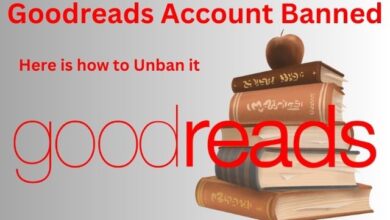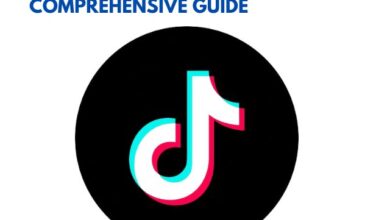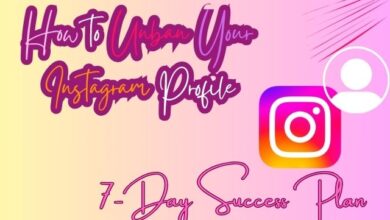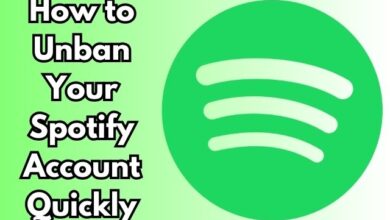How to Unban Your YouTube Channel: A Comprehensive Guide
Learn how to Unban your YouTube channel with our comprehensive guide. Learn 7 effective strategies for a successful appeal.
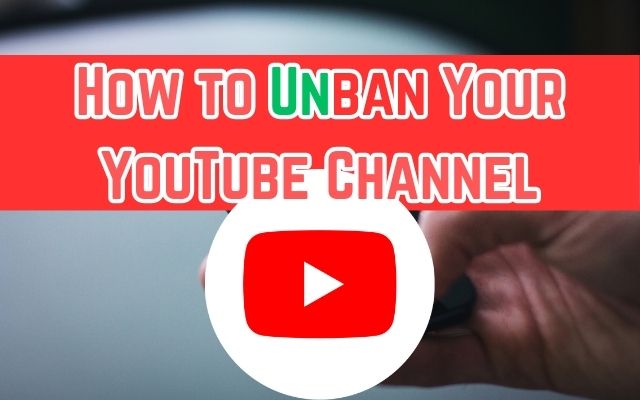
In the digital age, YouTube has emerged as a powerful platform for content creators worldwide. However, navigating YouTube’s policies can be a complex task, and violations can lead to your channel being banned. If you find yourself in this predicament, don’t despair. This article will guide you on how to unban your YouTube channel.
Understanding YouTube’s policies and the reasons behind your ban is the first step towards reinstatement. It’s crucial to remember that YouTube’s primary goal is to create a safe and respectful environment for all users. Therefore, any content or behavior that violates this ethos can result in a ban.
But what if your ban was a misunderstanding, or you’ve taken steps to correct the violation? This is where our guide comes in. We will walk you through seven effective strategies to appeal your ban and get your channel back up and running. From reviewing YouTube’s policies to submitting an appeal, contacting YouTube support, and even seeking legal advice, we’ve got you covered.
Remember, the key to a successful appeal is understanding and rectifying the issue that led to your ban. So, let’s dive in and explore these strategies to unban your YouTube channel.
Understanding Why Your YouTube Account Was Banned
Before you can successfully appeal a ban on your YouTube channel, it’s crucial to understand why your account was banned in the first place. YouTube, like any other platform, has a set of community guidelines and policies that all users must adhere to. Violating these rules can result in penalties, including the suspension of your account.
YouTube’s policies cover a wide range of content and behavior, including but not limited to, hate speech, harassment, violence, nudity, harmful or dangerous content, and copyright infringement. If your content or behavior falls under any of these categories, it could be the reason behind your ban.
However, YouTube’s algorithms aren’t perfect, and there are instances where channels are mistakenly flagged for violations. In such cases, understanding the specifics of the alleged violation is key to making a successful appeal.
It’s also worth noting that YouTube operates on a three-strike system. This means that minor violations might not immediately result in a ban. Instead, you’ll receive a warning or a strike. Accumulating three strikes within a 90-day period will lead to a ban.
Strategy 1: Reviewing YouTube’s Policies
The first step in unbanning your YouTube channel is to thoroughly review YouTube’s policies. Understanding these policies is crucial as it helps you identify what went wrong and how you can rectify it.
YouTube’s policies are designed to ensure a safe and respectful environment for all its users. They cover a wide range of areas including community guidelines, copyright policies, and terms of service. Violating any of these policies can result in penalties, including the suspension of your account.
Community Guidelines: These guidelines are designed to ensure that the content on YouTube is appropriate and respectful. They cover areas such as nudity or sexual content, harmful or dangerous content, hateful content, violent or graphic content, harassment and cyberbullying, spam, misleading metadata, and scams.
Copyright Policies: YouTube takes copyright infringement very seriously. If you use someone else’s content without their permission, you could be violating YouTube’s copyright policies. This could be the reason behind your ban.
Terms of Service: These are the rules that you agree to follow when you create a YouTube account. They cover areas such as your use of the service, your content and conduct, and the termination of your account.
By reviewing these policies, you can gain a better understanding of what YouTube expects from its users. This will not only help you identify the reason behind your ban but also guide you in making sure that your future content is in line with YouTube’s policies.
Strategy 2: Identifying the Violation
Once you have a solid understanding of YouTube’s policies, the next step is to identify the specific violation that led to your ban. This is a crucial step in the process of unbanning your YouTube channel as it allows you to address the exact issue in your appeal.
When your YouTube channel is banned, you will typically receive an email from YouTube explaining the reason for the ban. This email will often include the specific policy that your channel is alleged to have violated. If you did not receive such an email, or if the reason provided is unclear, you may need to do some detective work.
Start by reviewing your channel’s content. Consider each video, comment, and any other form of user engagement. Are there any that could potentially violate YouTube’s policies? Remember, violations are not limited to videos alone. Comments, playlists, thumbnails, and other forms of content can also lead to violations.
If you’re still unsure, consider seeking help from the YouTube community. There are numerous forums and discussion groups where you can share your experience and get advice from other YouTubers who may have faced similar issues.
Identifying the violation is not just about understanding what went wrong. It’s also about learning from the mistake and taking steps to ensure it doesn’t happen again. This shows YouTube that you take their policies seriously and are committed to creating a safe and respectful community.
Strategy 3: Submitting an Appeal
After understanding YouTube’s policies and identifying the violation, the next step is to submit an appeal to YouTube. This is your opportunity to explain your situation and ask YouTube to reconsider the ban on your channel.
When submitting an appeal, it’s important to be honest and clear. Explain the violation, acknowledge your mistake, and describe the steps you’ve taken to rectify it. If you believe your channel was mistakenly flagged, provide as much detail as possible to support your claim.
To submit an appeal, follow these steps:
- Go to YouTube’s Policy & Safety Hub: You can find this on YouTube’s website. Look for the option to ‘Submit an appeal’.
- Fill Out the Appeal Form: Provide all the necessary details, including your contact information, the URL of your suspended channel, and the reason for your appeal.
- Write Your Appeal Statement: This is the most crucial part of the appeal. Be concise, respectful, and honest. Explain the situation, acknowledge any mistakes you made, and describe how you plan to comply with YouTube’s policies in the future.
- Submit the Appeal: Once you’ve filled out the form and written your appeal statement, submit the appeal. You should receive a confirmation email from YouTube.
Remember, the appeal process is not instantaneous. It may take several days or even weeks for YouTube to review your appeal and make a decision. During this time, it’s important to be patient and refrain from submitting multiple appeals, as this could delay the process.
Strategy 4: Contacting YouTube Support
If your appeal is unsuccessful or you’re not getting a response, the next step is to contact YouTube Support directly. This can be an effective way to get more information about your ban and what you can do to resolve it.
YouTube Support is there to help users navigate issues with their accounts. They can provide more detailed information about your ban and guide you through the process of rectifying the issue.
Here’s how you can contact YouTube Support:
- Visit the YouTube Help Center: The YouTube Help Center is a comprehensive resource that covers all aspects of using YouTube. You can find articles on a wide range of topics, including account management, content creation, and policy enforcement.
- Use the ‘Contact Us’ Option: If you can’t find the information you need in the Help Center, you can use the ‘Contact Us’ option to get in touch with YouTube Support. You’ll need to provide your contact information and a detailed description of your issue.
- Follow Up on Your Appeal: If you’ve already submitted an appeal and haven’t heard back, you can follow up with YouTube Support. Be sure to provide all the relevant details, including when you submitted your appeal and any response you received.
Remember, when contacting YouTube Support, it’s important to be patient and respectful. They deal with a large volume of queries every day, so it may take some time for them to respond to your request.
Strategy 5: Using Social Media to Your Advantage
In today’s digital age, social media can be a powerful tool for reaching out and getting your voice heard. If your YouTube channel has been banned and your appeals are not getting the desired response, consider turning to social media for help.
Social media platforms like Twitter, Facebook, and Instagram have a wide reach and can help bring attention to your situation. Here’s how you can use social media to your advantage:
- Share Your Story: Post about your situation on your social media accounts. Be honest and clear about what happened, and ask your followers for support. Remember to use relevant hashtags to increase the visibility of your posts.
- Reach Out to YouTube: Many companies, including YouTube, have social media teams that monitor posts and comments. Tag YouTube in your posts and politely ask them to review your case.
- Engage with the Community: Join groups and forums related to YouTube content creation. Share your story and ask for advice. Other content creators may have experienced similar situations and can offer valuable insights.
- Stay Positive and Respectful: It’s important to stay positive and respectful in your communications, even if you’re frustrated. Negative or aggressive posts could harm your case.
Remember, while social media can be a powerful tool, it’s important to use it responsibly. Avoid spamming or harassing YouTube or its employees, as this could lead to further penalties.
Strategy 6: Seeking Legal Advice
In some cases, especially when large amounts of revenue or significant intellectual property are at stake, you may want to consider seeking legal advice. A lawyer who specializes in digital media or intellectual property law can provide valuable insights and help you navigate the complex landscape of YouTube’s policies.
Here’s how legal advice can help:
- Understanding Your Rights: A lawyer can help you understand your rights as a content creator. This includes copyright laws, fair use policies, and other relevant legal frameworks.
- Reviewing Your Case: A lawyer can review your case and provide a legal perspective. They can help identify any potential legal issues and advise on the best course of action.
- Communicating with YouTube: If necessary, a lawyer can help communicate with YouTube on your behalf. They can help draft legal letters, respond to YouTube’s communications, and represent you in any legal proceedings.
- Negotiating a Resolution: In some cases, a lawyer may be able to negotiate a resolution with YouTube. This could involve lifting the ban, restoring your videos, or even negotiating a settlement.
Remember, seeking legal advice should be considered a last resort, as it can be costly and time-consuming. However, in certain situations, it can be an effective strategy to unban your YouTube channel.
Strategy 7: Preventing Future Bans
The final strategy in unbanning your YouTube channel is perhaps the most important one: preventing future bans. Once your channel is reinstated, it’s crucial to ensure that you don’t find yourself in the same situation again.
Here are some steps you can take to prevent future bans:
- Understand YouTube’s Policies: As we’ve discussed, understanding YouTube’s policies is the first step to avoiding violations. Make sure you’re familiar with YouTube’s community guidelines, copyright policies, and terms of service.
- Regularly Review Your Content: Regularly review your content to ensure it complies with YouTube’s policies. This includes your videos, comments, playlists, and thumbnails.
- Engage Respectfully: Engage respectfully with your viewers and other YouTubers. Avoid hate speech, harassment, and other forms of disrespectful behavior.
- Stay Updated: YouTube’s policies can change, so it’s important to stay updated. Subscribe to YouTube’s official blog or follow them on social media to get the latest news and updates.
- When in Doubt, Ask: If you’re unsure whether something violates YouTube’s policies, it’s better to ask than to risk a violation. You can ask YouTube Support, consult the YouTube Help Center, or ask in YouTube community forums.
By following these steps, you can reduce the risk of future bans and ensure that your YouTube channel remains a safe and respectful space for your viewers.
- How to Unban Your Snapchat: Harness the Power of Persistence
- How to Unban Your Pinterest: 5 Insider Secrets Revealed
- How to Unban a User from a Facebook Group
Conclusion: How to Unban Your YouTube Channel
Getting your YouTube channel banned can be a stressful experience, but it’s not the end of the world. By understanding YouTube’s policies, identifying the violation, submitting an appeal, contacting YouTube Support, using social media, seeking legal advice, and taking steps to prevent future bans, you can get your channel reinstated and continue sharing your content with the world. Remember, the key to a successful appeal is understanding and rectifying the issue that led to your ban. Good luck!
Frequently Asked Questions: How to Unban Your YouTube Channel
What is a YouTube ban?
A YouTube ban occurs when a user violates YouTube’s community guidelines, terms of service, or copyright policies, resulting in the suspension of their channel. This restricts the user from uploading videos, commenting, and using other YouTube features.
Why was my YouTube channel banned?
YouTube channels can be banned for various reasons, including hate speech, harassment, violence, nudity, harmful content, and copyright infringement. Users typically receive an email from YouTube explaining the reason for the ban.
How can I appeal a YouTube ban?
To appeal, submit a request through YouTube’s Policy & Safety Hub. In your appeal, clarify the situation, admit any mistakes, and outline your commitment to adhering to YouTube’s policies going forward.
What should I do if my appeal is unsuccessful?
If your appeal fails, contact YouTube Support for additional insights on the ban and potential resolutions. Legal advice may be considered, especially if significant revenue or intellectual property is involved.
Can I use social media to help unban my YouTube channel?
Yes, leveraging social media can be effective. Share your story, engage with the community, and maintain a positive and respectful tone. Directly communicating with YouTube through social channels may also yield results.
How can I prevent future YouTube bans?
To avoid future bans, familiarize yourself with YouTube’s policies, regularly review content, engage respectfully, stay informed about policy changes, and seek clarification when uncertain about policy compliance.
What is YouTube’s three-strike system?
YouTube operates on a three-strike system. Minor violations result in warnings or strikes. Accumulating three strikes within 90 days leads to a ban.

